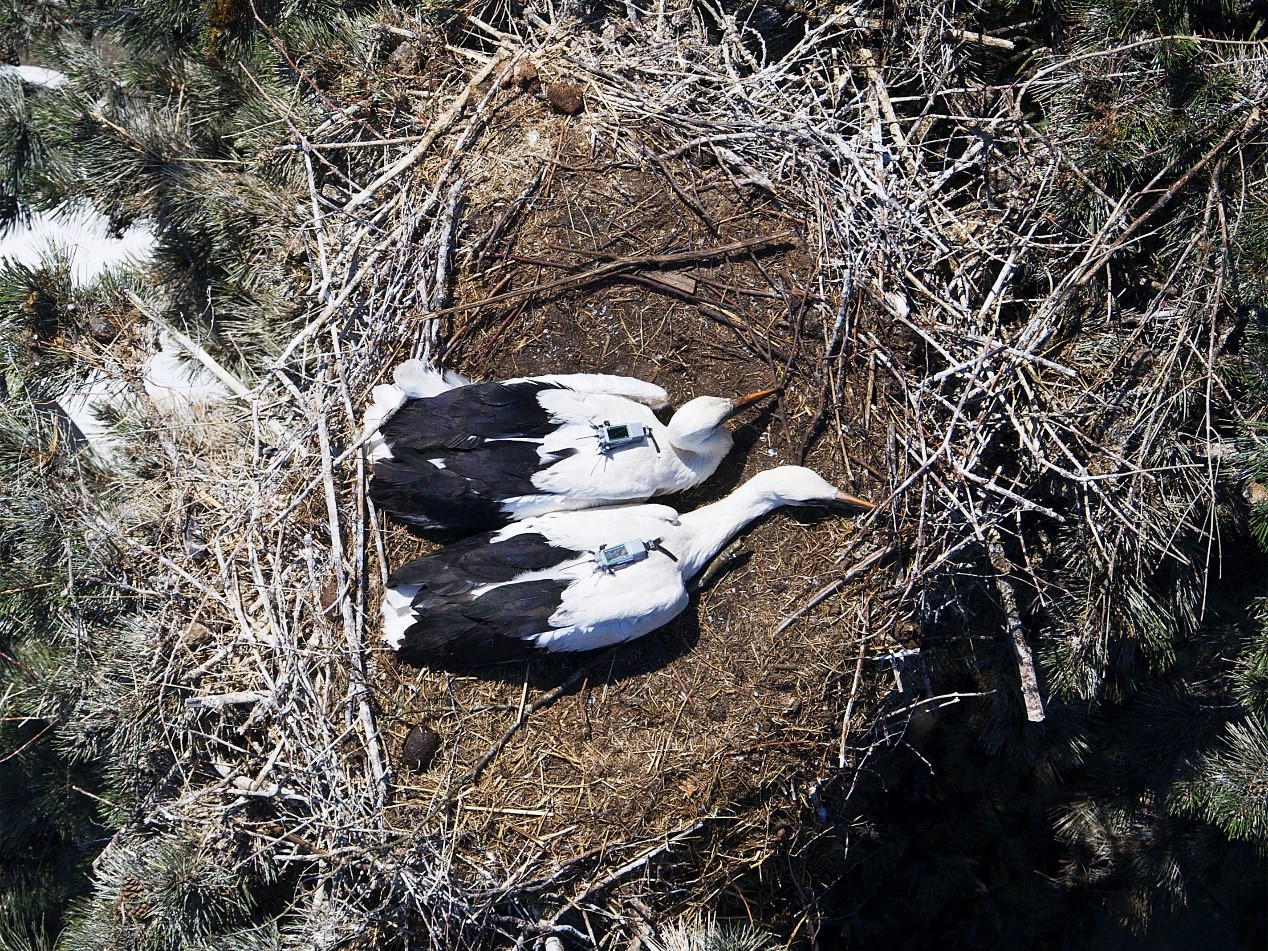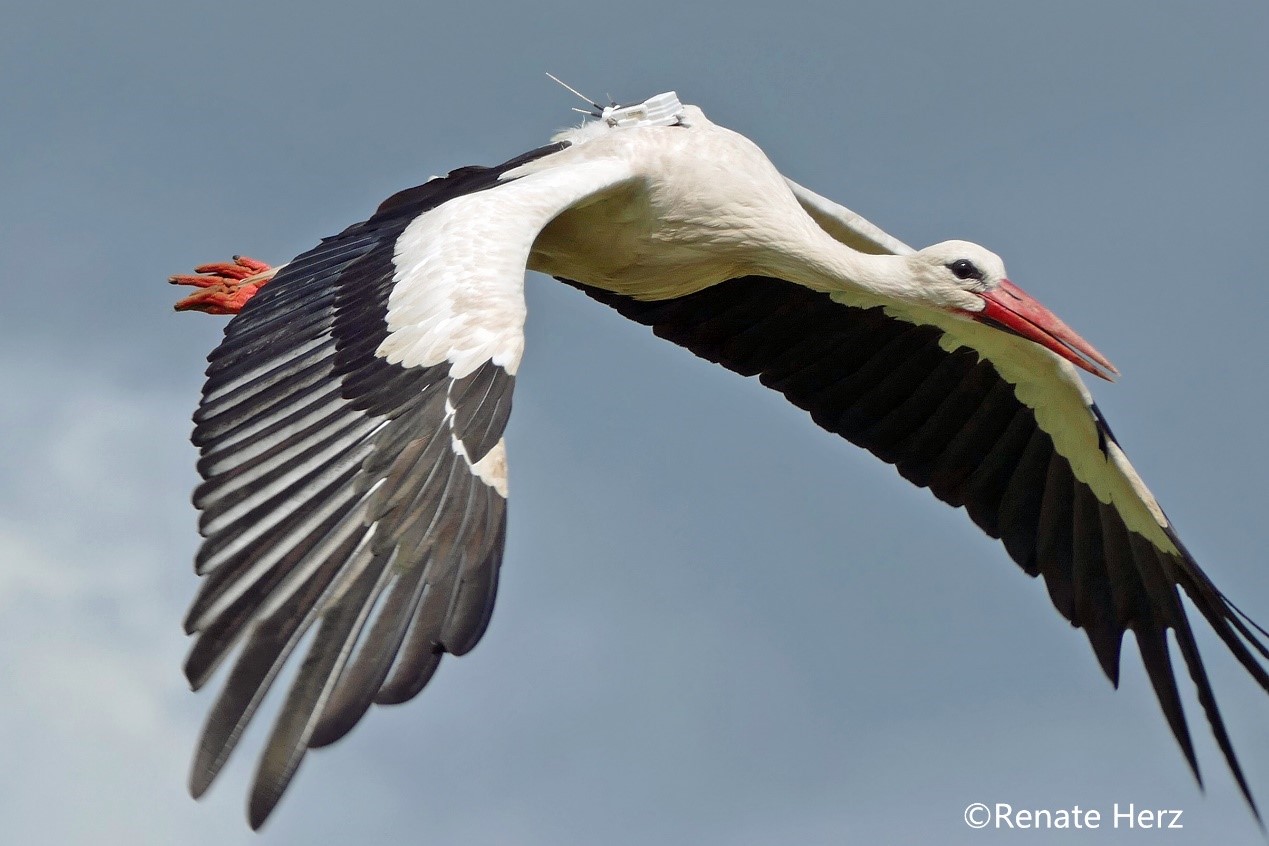Blog written by Yachang Cheng & Andrea Flack. Read the full paper here.
Migration is a fascinating and extraordinary phenomenon that has evolved as a response to seasonally changing environments. But despite its benefits, migration is also costly in terms of time, energy, and many other unpredictable risks. On top of that, life in the Anthropocene, the current epoch in which humans have become a global geophysical force, challenges many ancient evolutionary adaptations, including migration.
Recently we have observed that birds are changing their migratory behavior by flying along different routes at different times, or even completely stopping their migration. Humans can have massive and rapid impacts on the life and surroundings of animals, forcing them to react quickly to the changing world in order to survive. Some individuals might be better suited to adapt to human-modified landscapes, causing differences in individual fitness (productivity and survival) and subsequently influencing the demography of the entire species.
The white stork is one of the most symbolic examples of avian migration, and, with it, migration research. Thanks to storks, people discovered in 1822 that some birds overwinter on the African continent by observing a stork in Europe that had an African arrow stuck in its neck. Inspired by that discovery, researchers started to put individually numbered leg bands on storks leading to an extensive knowledge of their migration routes and overwintering grounds in Sub-Saharan Africa up to 4000km away from home.
Human influences have, however, affected the storks’ migratory behaviour drastically during the last three decades. In particular, birds that breed in Western Europe and migrate across the Strait of Gibraltar to overwinter in the Sahel region of Western Africa have altered their winter destination. Between 1970 and 1980, very few individuals overwintered in Europe, but since the late 1980s, the number of storks staying north of the Sahara increased dramatically (Archaux et.al.2004). This was mainly caused by additional food sources such as organic rubbish in open landfills, the invasive crayfish (Procambarus clarkii), and warmer temperatures caused by climate change.

An interesting question that arises is whether the storks that shortened their migratory distance have a higher fitness. While it has been shown that a shorter migration distance can bring breeding benefits to the adults (Gilbert et.al.2016), the effect on survival has not been explored. In contrast to adults, white stork juveniles have a very low survival rate; only 30% of the juveniles survive their first year (compared to 80% of the adults). This also means that the selection pressure on juvenile survival is much higher. So are juveniles with shorter migratory distance surviving better? What other individual traits are linked to their mortality risks, e.g. sex, hatching ranks, fledging time or migration departure time?
Since 2013, we have attached more than three hundred GPS-accelerometer loggers to juvenile white storks across their entire distribution range (i.e. from Spain to Uzbekistan). We explored the differences in their migration patterns (Flack et.al. 2016), and their social behaviour while travelling to the South (Flack et al. 2018). These long-term data now allowed us to also explore the link between migration strategy and survival in juveniles from Germany and Austria.

The attached loggers provide us with various information on the individual, maybe comparable to a smart watch or wristband for humans. They also allowed us to identify death events, for example, when the movement recorder (accelerometer) showed flat lines, or the GPS positions were all clustered in one place for a long time. And often, thanks to many wonderful and dedicated collaborators along the migration routes, we located the dead individual in the field allowing us to confirm the death and explore its causes.

A majority of mortality events occured during the migration period. Our results showed that longer migratory distance increased the mortality risk during migration. Most of our storks stayed in Europe (55.26%) or North Africa (28.95%) for their first winter. These survived better than their conspecifics who overwintered more traditionally in Sub-Saharan Africa. Also, birds that fledged late and moved less actively had higher mortality risks. Our findings suggest that overwintering in Europe may, in fact, benefit juvenile survival, causing a change in the migration strategy of the Western European white stork population.
The long-term consequences of these changes in migration strategy are still unforeseeable and require further monitoring, especially in the light of the coming closure of open landfills in Europe. Will white storks regain their long-distance migratory behaviour and adjust their strategy again? Exploring white stork survival is essential when it comes to understanding the demography of the entire population, and it also helps conservation mangers to develop action plans to deal with current rapidly global changes. Most importantly, it informs us how humans are alterering selection forces and with it migratory behavior.
Since we believe that scientific knowledge can be gained by improving data accessibility, we published our complete data set in the Movebank Data Repository (https://www.datarepository.movebank.org/).
Reference
Archaux F., G. Balança G, P. Y. Henry, G. Zapata. 2004. Wintering of white storks in Mediterranean France. Waterbirds 27(4): 441-446.
Flack, A., M. Nagy, W. Fiedler, I. D. Couzin, and M. Wikelski. 2018. From local collective behavior to global migratory patterns in white storks. Science 360:911–914.
Flack, A., W. Fiedler, J. Blas, I. Pokrovsky, M. Kaatz, M. Mitropolsky, K. Aghababyan, I. Fakriadis, E. Makrigianni, L. Jerzak, H. Azafzaf, C. Feltrup-Azafzaf, S. Rotics, T. M. Mokotjomela, R. Nathan, and M. Wikelski. 2016. Costs of migratory decisions: A comparison across eight white stork populations. Science Advances 2:e1500931–e1500931.
Gilbert, N. I., R. A. Correia, J. P. Silva, C. Pacheco, I. Catry, P. W. Atkinson, J. A. Gill, and A. M. A. Franco. 2016. Are white storks addicted to junk food? Impacts of landfill use on the movement and behaviour of resident white storks (Ciconia ciconia) from a partially migratory population. Movement Ecology 4:7.

I live on a preserve and there is a White Stork standing across the pond alone in the brush for hours now and wonder if he may be going to pass away. I am in South West Florida
LikeLike